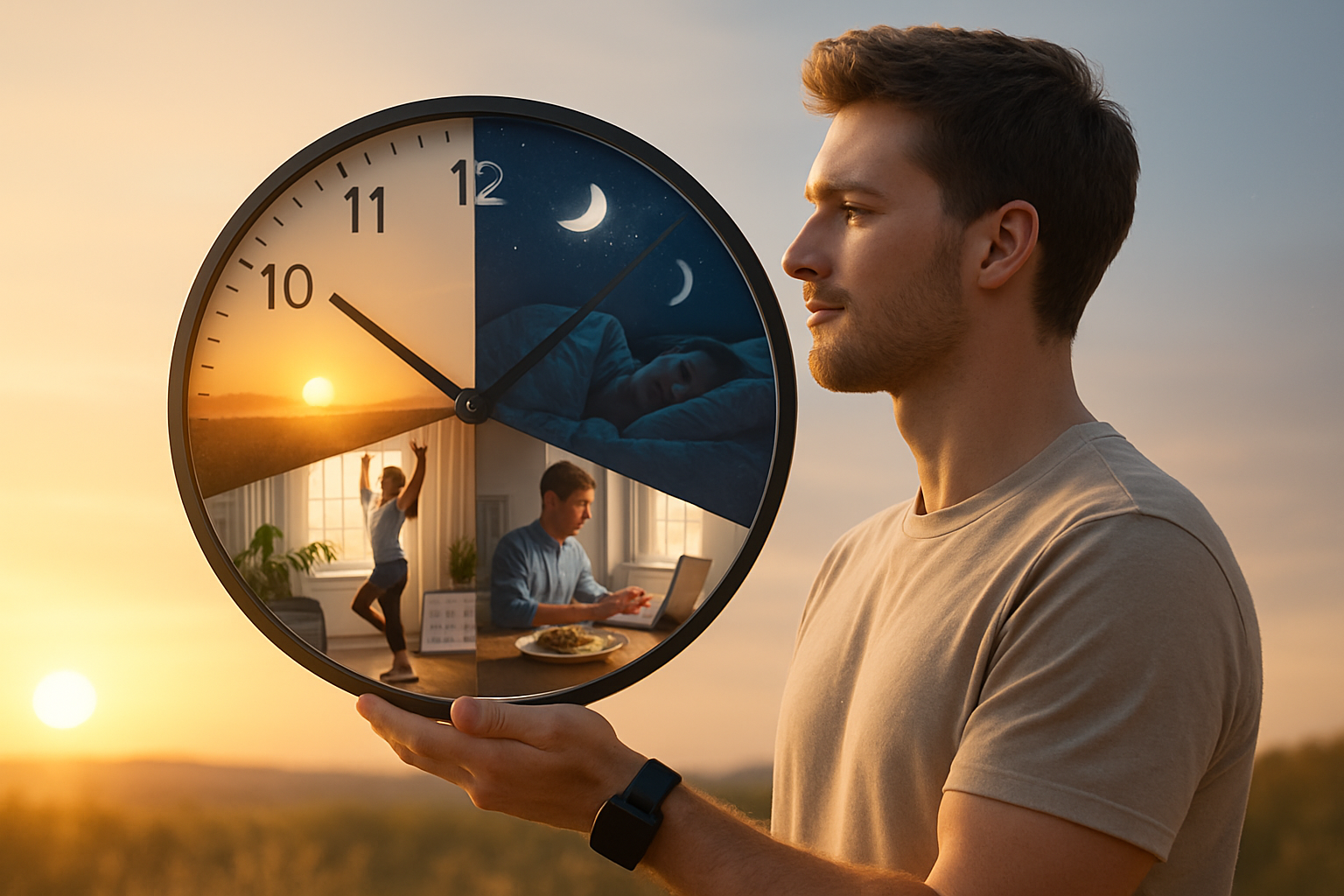Biorhythm Optimization: Syncing Your Life with Nature's Clock
Imagine waking up feeling refreshed, brimming with energy, and ready to conquer the day—every single day. What if you could tap into your body's natural rhythms to enhance your health, productivity, and overall well-being? Welcome to the world of biorhythm optimization, a cutting-edge approach to living in harmony with your body's innate cycles.

Understanding Biorhythms: Nature’s Time-Keepers
Biorhythms are the natural cycles that govern various physiological processes in our bodies. These rhythms are influenced by external factors such as light, temperature, and social interactions, as well as internal biological clocks. The most well-known biorhythm is the circadian rhythm, which regulates our sleep-wake cycle over a 24-hour period. However, our bodies are governed by numerous other rhythms, including ultradian rhythms (shorter than 24 hours) and infradian rhythms (longer than 24 hours).
Scientists have long recognized the importance of these rhythms in maintaining optimal health. Recent research has shown that disruptions to our natural biorhythms can contribute to a wide range of health problems, including obesity, diabetes, cardiovascular disease, and even certain types of cancer.
The Science Behind Biorhythm Optimization
Biorhythm optimization involves aligning our daily activities with our body’s natural cycles to maximize performance and well-being. This approach is grounded in the field of chronobiology, which studies the timing of biological processes and their adaptation to solar and lunar-related rhythms.
Recent advances in chronobiology have revealed that different bodily functions peak at specific times of the day. For example, cognitive performance tends to be highest in the late morning, while physical strength and endurance peak in the late afternoon. By understanding and working with these natural fluctuations, we can optimize our daily routines for peak performance and health.
Practical Applications of Biorhythm Optimization
Implementing biorhythm optimization in your daily life can lead to significant improvements in various aspects of health and well-being:
-
Sleep Quality: Aligning your sleep schedule with your natural circadian rhythm can improve sleep quality and duration. This involves maintaining consistent sleep and wake times, even on weekends, and exposing yourself to natural light upon waking.
-
Nutrition: Timing your meals to coincide with your body’s natural digestive rhythms can enhance nutrient absorption and metabolism. For instance, eating larger meals earlier in the day when digestive enzymes are most active.
-
Exercise: Scheduling workouts to align with your body’s natural energy peaks can improve performance and recovery. High-intensity exercises are often more effective in the late afternoon when body temperature and muscle strength are at their highest.
-
Cognitive Performance: Tackling complex mental tasks during your peak cognitive hours (usually in the late morning) can enhance productivity and creativity.
-
Stress Management: Understanding your body’s natural stress response cycles can help you implement more effective stress-reduction techniques at optimal times.
Challenges and Considerations
While biorhythm optimization holds great promise, it’s not without challenges. One of the main obstacles is the rigid structure of modern society, which often conflicts with our natural rhythms. Work schedules, social obligations, and other commitments can make it difficult to fully align with our biorhythms.
Additionally, individual variations in chronotypes (whether you’re a “morning person” or a “night owl”) mean that a one-size-fits-all approach is not effective. Personalization is key to successful biorhythm optimization.
The Future of Biorhythm Optimization
As our understanding of chronobiology deepens, the potential applications of biorhythm optimization continue to expand. Emerging technologies, such as wearable devices that track various physiological markers, are making it easier for individuals to monitor and optimize their biorhythms in real-time.
In the medical field, chronotherapy—the practice of delivering treatments at specific times to maximize effectiveness and minimize side effects—is gaining traction. This approach has shown promising results in cancer treatment, where the timing of chemotherapy administration can significantly impact its efficacy and toxicity.
Syncing with Your Natural Rhythm: Practical Tips
• Start your day with natural light exposure to reset your circadian clock
• Maintain consistent meal times to regulate digestive and metabolic rhythms
• Schedule high-intensity workouts for late afternoon when physical performance peaks
• Tackle complex mental tasks in the late morning during peak cognitive hours
• Wind down in the evening by dimming lights and avoiding screens to prepare for sleep
• Practice consistent sleep and wake times, even on weekends
• Use a sleep tracking app to identify your natural sleep patterns and optimize your schedule
• Consider your chronotype when planning your daily routine
In conclusion, biorhythm optimization represents a paradigm shift in our approach to health and wellness. By aligning our lives with our body’s natural rhythms, we can unlock new levels of physical and mental performance, improve our overall health, and enhance our quality of life. As we continue to unravel the mysteries of our internal clocks, the potential for biorhythm optimization to revolutionize personal health management is truly exciting. Embracing this approach may be the key to living in harmony with our biological nature in our modern world.





